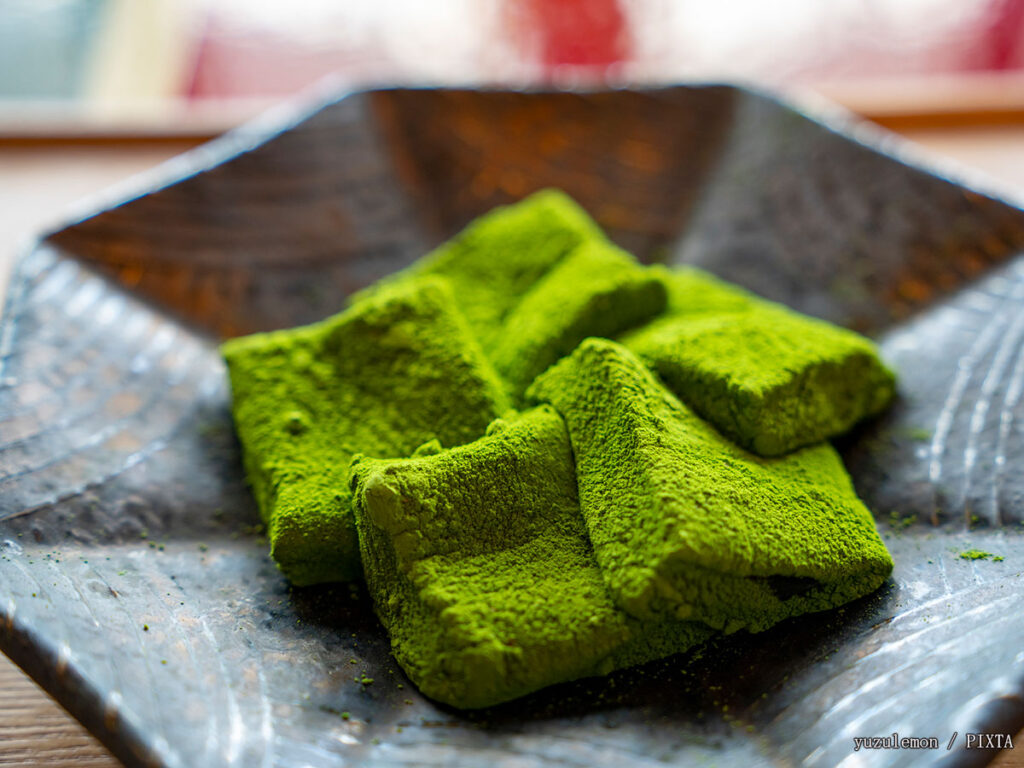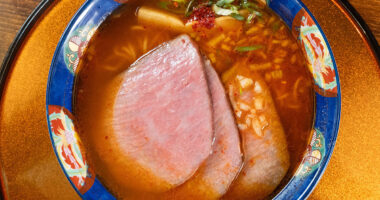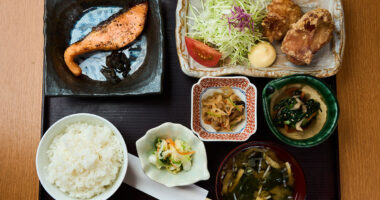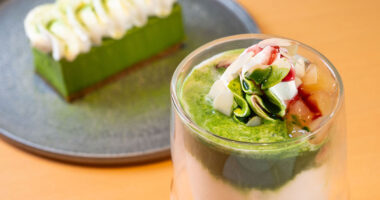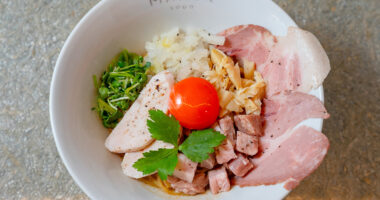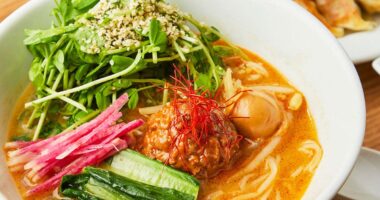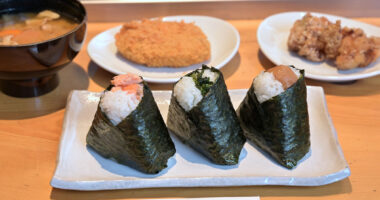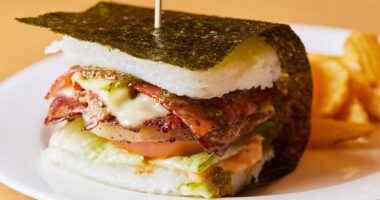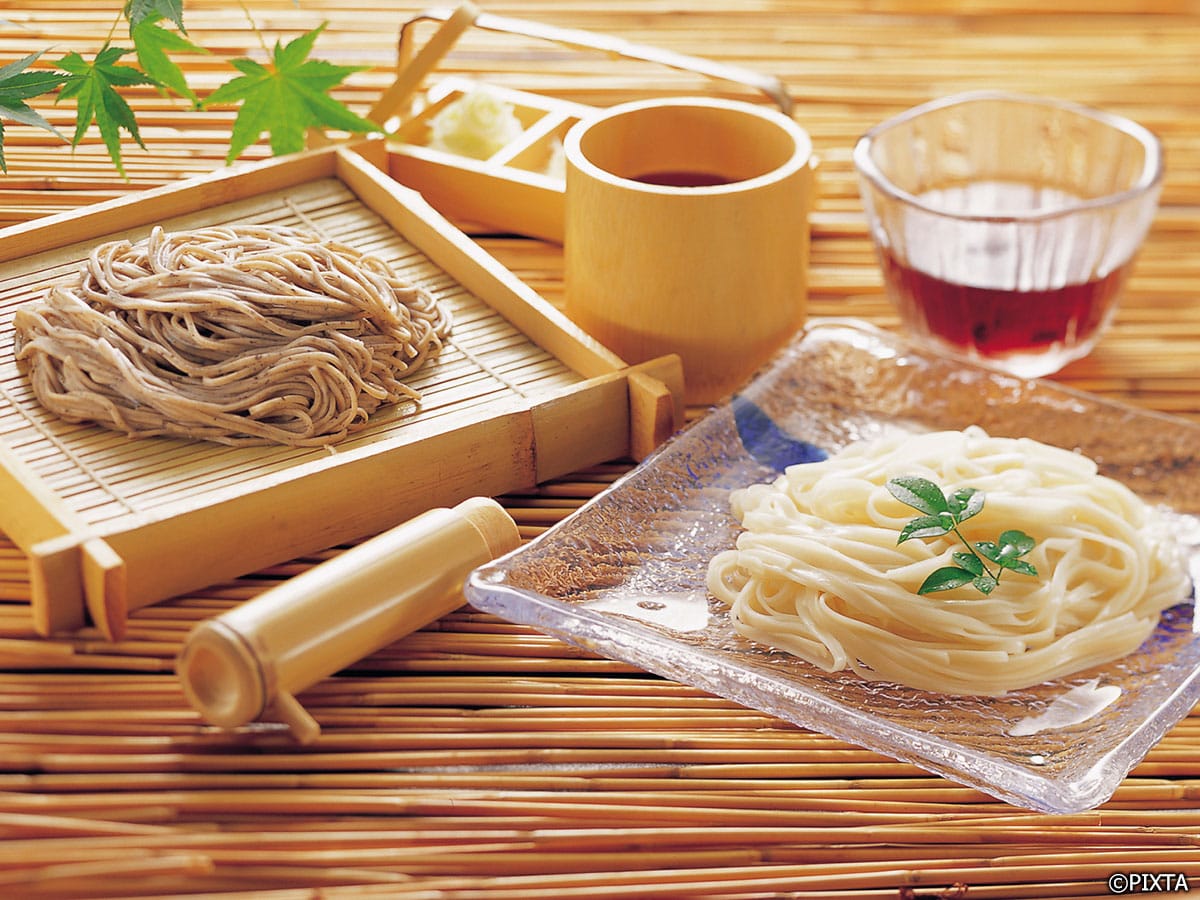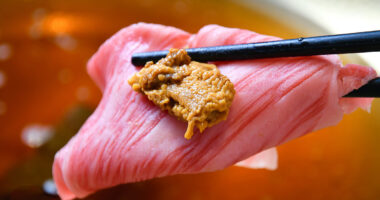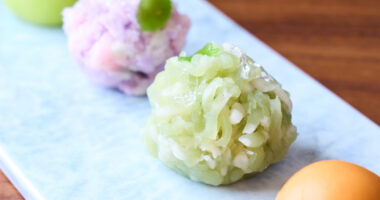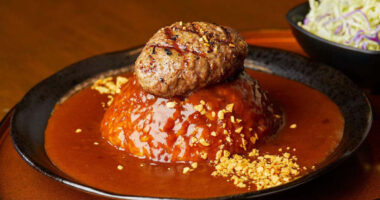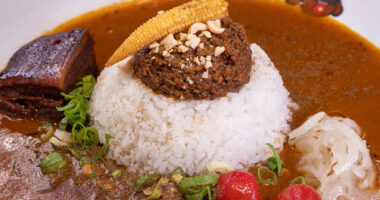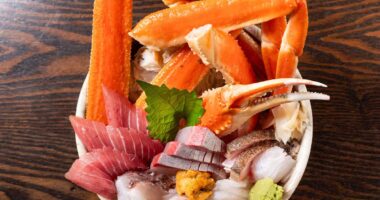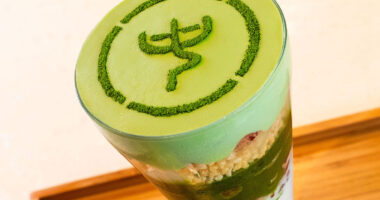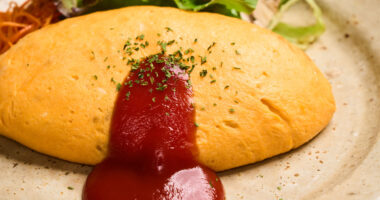Kyoto, a city rich in history and culture, is equally famous for its refined cuisine. From traditional dishes rooted in centuries of culinary heritage to innovative flavors, Kyoto offers a unique taste experience. Here are the must-try foods in Kyoto that capture the essence of this elegant city!
- Matcha: Kyoto's world-famous green tea
- Kyoto-style ramen: Kyoto's take on Japan's noodle classic
- Yudōfu: tofu like you've never had it before!
- Kyō-wagashi: Kyoto's traditional sweets
- Obanzai: Kyoto's home-style cuisine
- Kyoto sushi and temari sushi: Kyoto's unique sushi style
- Kyō-yasai: Kyoto's famously delicious vegetables
- Soba: Kyoto's refined take on traditional noodles
- Kyō-Kaiseki: Traditional full-course Japanese dining
Matcha: Kyoto’s world-famous green tea
Kyoto is well-renowned for its high-quality matcha, a powdered green tea that’s used in traditional tea ceremonies. Matcha is also incorporated into sweets and drinks across the prefecture. Kyoto is home to Uji, one of the most highly-regarded tea-growing regions in Japan. This makes matcha, in any form, a must when visiting Kyoto!
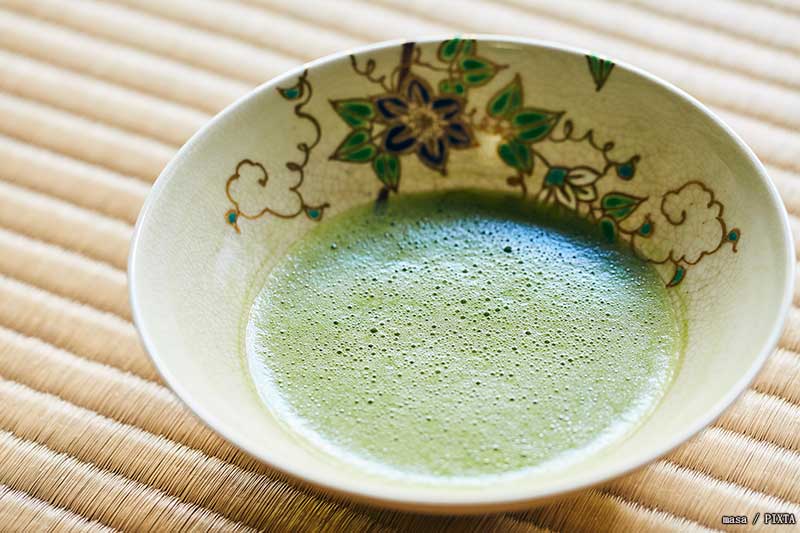
Matcha (Photo for illustrative purposes)
Kyoto-style ramen: Kyoto’s take on Japan’s noodle classic
While styles can vary from shop to shop, Kyoto-style ramen is known for its rich and savory soy sauce-based broth, often enhanced with a layer of flavorful back fat (se-abura). This hearty and comforting ramen usually features thin noodles, and is typically topped with tender slices of pork, green onions, and bamboo shoots. It offers a satisfying depth of flavor and is well-worth seeking out on a trip to Japan’s old capital.
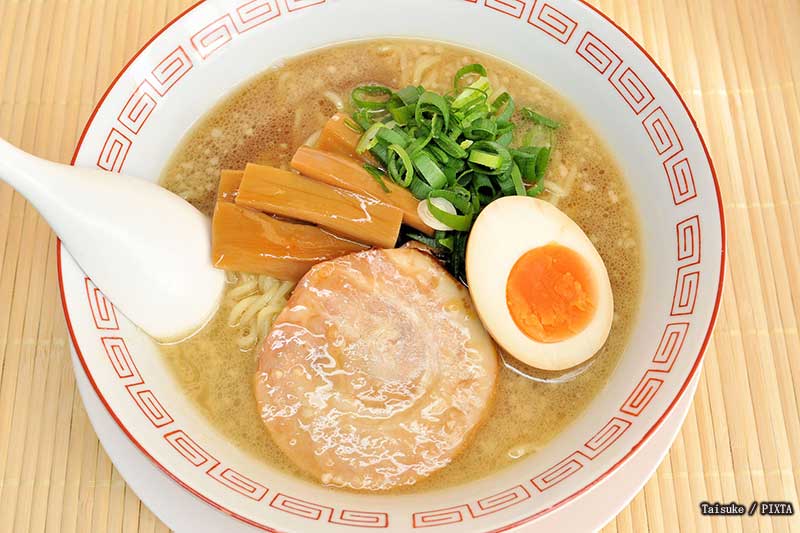
Kyoto-style ramen (Photo for illustrative purposes)
Yudōfu: tofu like you’ve never had it before!
A classic Kyoto dish, yudōfu consists of delicate tofu with a silky-textured simmered in a light broth. Often served with simple condiments like soy sauce, grated ginger, and green onions, this dish exemplifies Kyoto’s minimalist and refined culinary style.
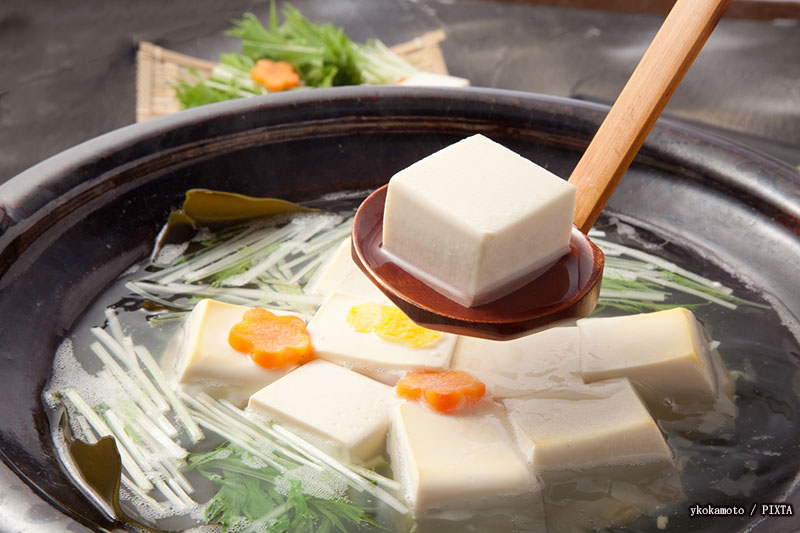
Yudofu (Photo for illustrative purposes)
Kyō-wagashi: Kyoto’s traditional sweets
Kyō-wagashi refers to Kyoto’s wide range of traditional Japanese confectionery. These sweets are often served with tea, especially matcha. Made from ingredients like rice flour and sweet bean paste, kyo-wagashi comes in intricate seasonal shapes and colors, and are highly popular as souvenirs and gifts.
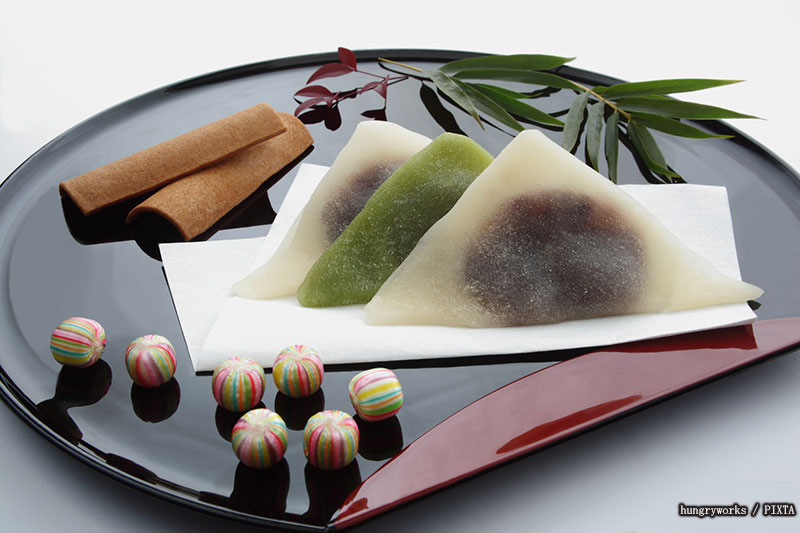
Kyo-wagashi (Photo for illustrative purposes)
Obanzai: Kyoto’s home-style cuisine
A home-style cooking tradition in Kyoto, obanzai consists of small, seasonal dishes made with locally sourced ingredients. In recent years, obanzai made with Kyoto vegetables have become particularly popular. These simple, yet flavorful dishes are typically served as side dishes in Kyoto meals, and offer a great sample of Kyoto’s highly touted seasonal ingredients.
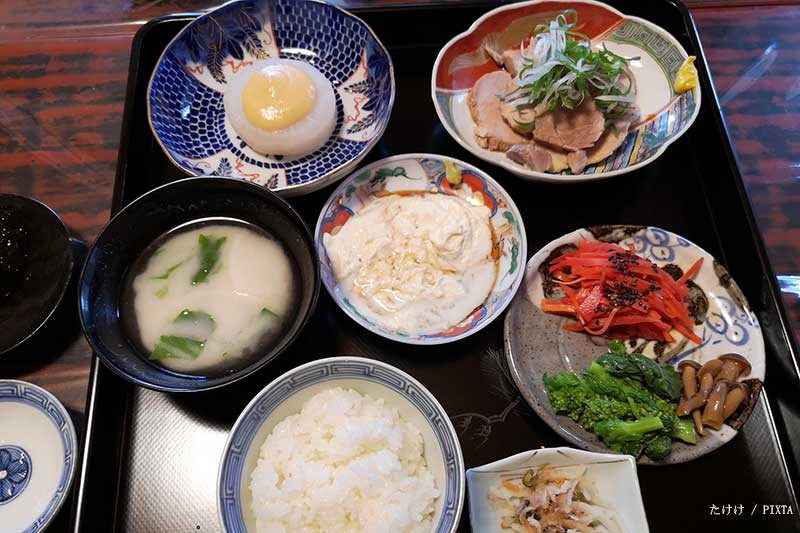
Obanzai (Photo for illustrative purposes)
Kyoto sushi and temari sushi: Kyoto’s unique sushi style
Kyoto sushi, also known as kyōzushi, often uses preserved or marinated fish, such as mackerel or sea bream, to enhance flavor and ensure freshness. The rice is typically seasoned with a light, sweet vinegar, and the sushi is sometimes pressed or wrapped in bamboo leaves. Temari sushi, small, ball-shaped sushi, is an elegant and bite-sized version of Kyoto sushi.
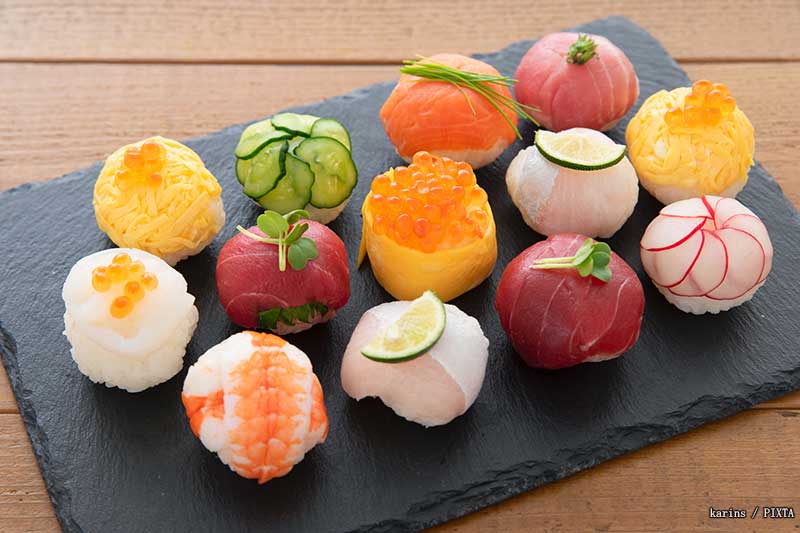
Temari sushi (Photo for illustrative purposes)
Kyō-yasai: Kyoto’s famously delicious vegetables
While not one particular dish, kyō-yasai are Kyoto vegetables, prized for their distinctive flavors, textures, and vibrant colors. Kamo eggplants, Shōgo’in turnips, and Mibuna greens are just some of Kyoto’s delicious vegetables that are appreciated for their natural sweetness and freshness. Vegetarians have a lot of tasty options to choose from when visiting Kyoto!
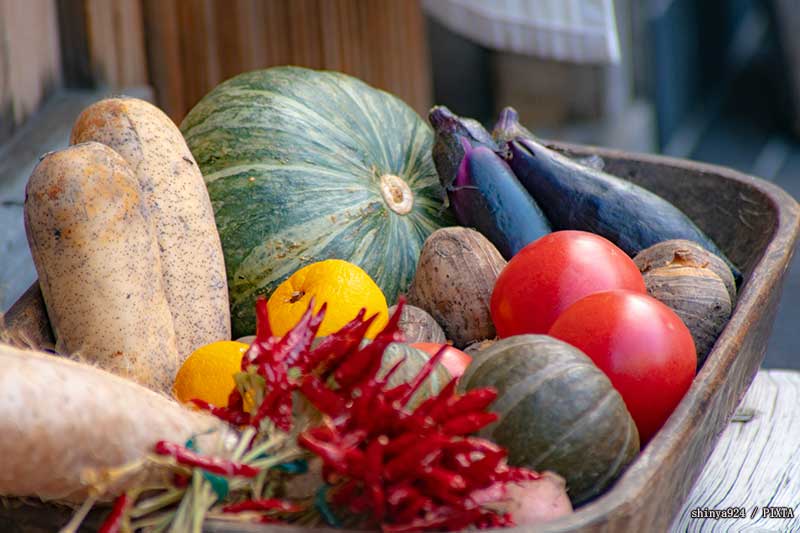
Kyo-yasai (Photo for illustrative purposes)
Soba: Kyoto’s refined take on traditional noodles
Soba, buckwheat noodles, are enjoyed all across Japan, but are a staple of the Kyoto culinary scene. Kyoto soba is typically served in a delicate, lightly flavored broth or with a dipping sauce, allowing the natural, earthy taste of the noodles to shine. There are even Uji matcha types of soba, with matcha kneaded into the flour. It’s recommended to pair soba with local ingredients like Kyoto vegetables or tempura for a full and flavorful experience.
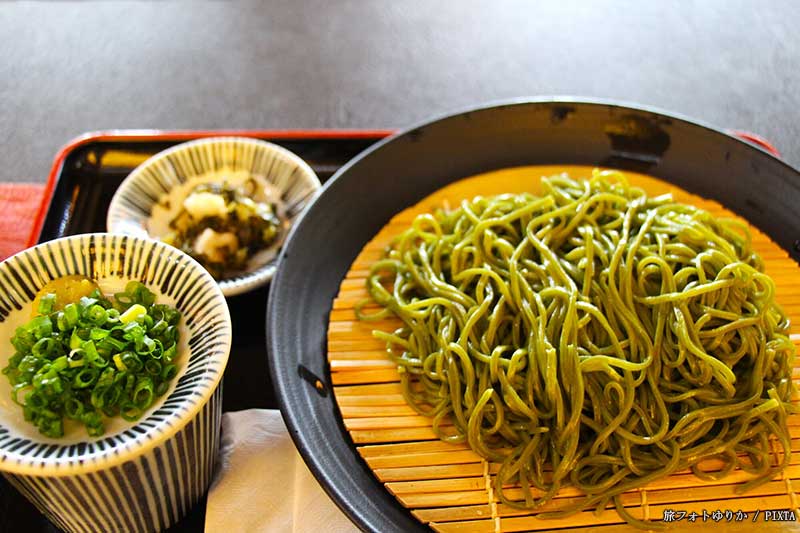
Uji matcha soba (Photo for illustrative purposes)
Kyō-Kaiseki: Traditional full-course Japanese dining
A traditional Japanese multicourse meal, kaiseki—or kyō-kaiseki as it is known in Kyoto, where it originated—is a perfect way to sample many local delicacies of the region. Kaiseki is often based around seasonal ingredients, which Kyoto is rich in and famous for. Every course, from delicate appetizers to beautifully plated sashimi and artfully prepared desserts, are meticulously crafted.
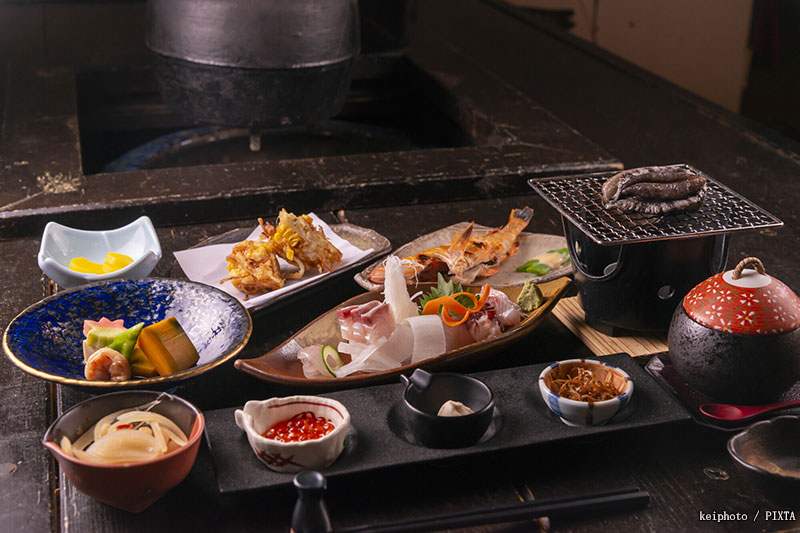
Kaiseki (Photo for illustrative purposes)
Kyoto is celebrated for its wonderful tourist spots, such as temples and shrines, that showcase the traditional side of Japan. That traditional side is also reflected in the area’s cuisine, so be sure to sample as much as you can!
